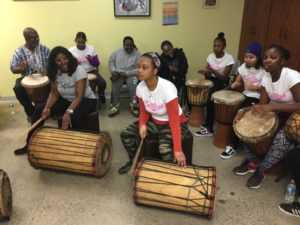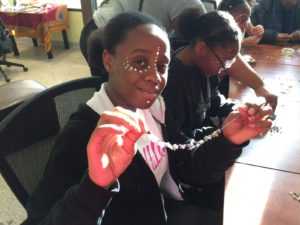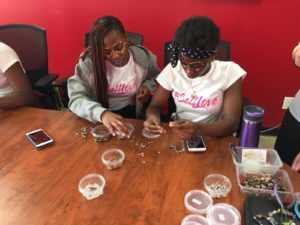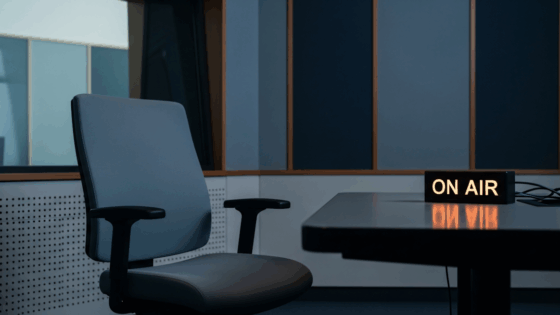on
BY: ALYSSA MAHADEO
When you look into the mirror are you happy with what you see? Do you love the person staring back at you, or is unhappiness and self-loathing looming over your shoulder?
The journey to self-love is a long and arduous process for some, a battlefield littered with self-doubt, low self-esteem, body confidence issues, and waves of unwarranted judgement, fueled by societal pressures to aspire to perfection. The problem with that mindset is that nothing in this world is perfect, and perfection is relative to those that define it. In recent years, the idea of embracing your unique qualities has proven to lead you down a happier road.
 Self Love Youth Wellness and Empowerment is a non-profit organization developed out of a need to engage youth in fitness while empowering them to be comfortable in their own skin. Their goal is to have youth use fitness and movement for both a mental and physical outlet, which increases the chances of them becoming healthy active adults.
Self Love Youth Wellness and Empowerment is a non-profit organization developed out of a need to engage youth in fitness while empowering them to be comfortable in their own skin. Their goal is to have youth use fitness and movement for both a mental and physical outlet, which increases the chances of them becoming healthy active adults.
Their mission is to empower youth, to invest in their future and to allow them to discover their sense of self. Growing up is tough, and without the proper guidance it’s difficult to discern the right decisions to make, navigate the choices we have, and most importantly love the people who we are.
Women especially grow up with a multitude of insecurities that come from low self-esteem, body confidence and the incessant worry and fear of judgement from their peers. By taking action and addressing these issues at an early age young women can learn how to deal with and overcome these issues before they get the chance to have any lasting damaging effects.
#SelfLove Youth Wellness and Empowerment has a corporate responsibility to give back to the youth. I Can & I Will founder Kym Niles’s love for fitness and movement is the basis of these classes and alongside program director Vanessa Spence and youth leader Jade Johnson they work together to encourage young people to embrace fitness and movement as part of their lifestyle. Each class consists of ninety minutes of learning how to move well and move often, with a goal of helping to strengthen them both mentally and physically.
Fitness is infused with mentorship and broken up into fifty minutes of fitness and forty minutes of self-discovery activities. Through their workshops youth develop basic fundamentals necessary for success: discipline, follow-through, leadership, teamwork, hard work and self-acceptance.
“I want them to see that everything they are looking for outside is within, that is my main mission,” Kym founder and mentor at Self Love Youth says. “I want them to be comfortable in their own skin, because there are too many people who are not comfortable in their own skin and it leads to so many other things happening.”
mission,” Kym founder and mentor at Self Love Youth says. “I want them to be comfortable in their own skin, because there are too many people who are not comfortable in their own skin and it leads to so many other things happening.”
These classes will be held bi-weekly for girls aged 12 to 18, impressionable and formative years in a young girls life that inevitably decide what kind of person she will be as she grows into an adult.
This past weekend at the Ujima House, a community space located at the corner of Weston Rd & Lawrence most noted for being a home away from home, class goers were able to experience a taste of the fun, friendship, discipline and acceptance these classes have to offer.
The Ujima House is a child friendly space designed to reflect the comfort and sensibilities needed to create an environment conducive to growth and development. It is most frequently used as a space for Young Potential Fathers, were young fathers can learn and bond with their children.
The event welcomed young girls from the community to partake in activities such as dance, face painting with face and body painter Carissma Brave, making your own gemstone bracelet with Loc’d & Luscious hair and jewelry accessory maker Sharean Fairman and a special hands on African drumming demonstration with Quammie Williams.
“When you hear about things that people do in the world, like getting involved in gangs on the street, girls going to guys to feel better about themselves all of these different situations it’s because they are lacking in Self Love,” Kym explains.
“Self-love is a very loaded word, but what it means is recognizing and owning who you are, taking care of yourself, and not feeling like you’re being selfish by any means, because you deserve to be loved by you first.”

Self Love is all about confident women leading girls to love themselves. They understand that youth are the future and this is a timeless investment they had committed to in order to teach these young women the values of self-acceptance, self-confidence, self-esteem and self-discipline. The Self Love Youth Wellness team is adept in the fitness industry with over twenty years of experience in fitness and mentorship.
“Once you set the standard, everyone around you will follow,” Kym affirms. “Every time I mentor a client or work with a youth I can see the lack of self-esteem, the lack of confidence, the piece that’s not yet fulfilled within them, and their looking for that attention and reassurance from outside,” she observes.
As parents and members of the community it is our obligation to work with and help these young people discover their self-worth. By encouraging them to become mentally and physically strong we show them they can be unstoppable. Self Love Youth Wellness classes began last year through founder Kym’s personal efforts supplemented through their workout apparel line with up to 20% from all sales contributed to the program. This particular project ‘In Motion’ is to reach and impact 100 girls. Through the funding of the Toronto Foundation, classes will be held regularly on a bi-weekly basis with 20 sessions at the Ujima House starting February 3rd, 2018. Those interested in taking part in classes are encouraged to visit their website at www.selfloveyouth.com.
“Once you can get a hold of your mind and become mentally strong, it’s the ultimate high and you being to walk to the beat of your own drum.”
Stay in the loop with exclusive news, stories, and insights—delivered straight to your inbox. No fluff, just real content that matters. Sign up today!













Camille Spencer Reid
January 29, 2018 at 12:07 am
Oh how I love this 👏👏 congratulations great work